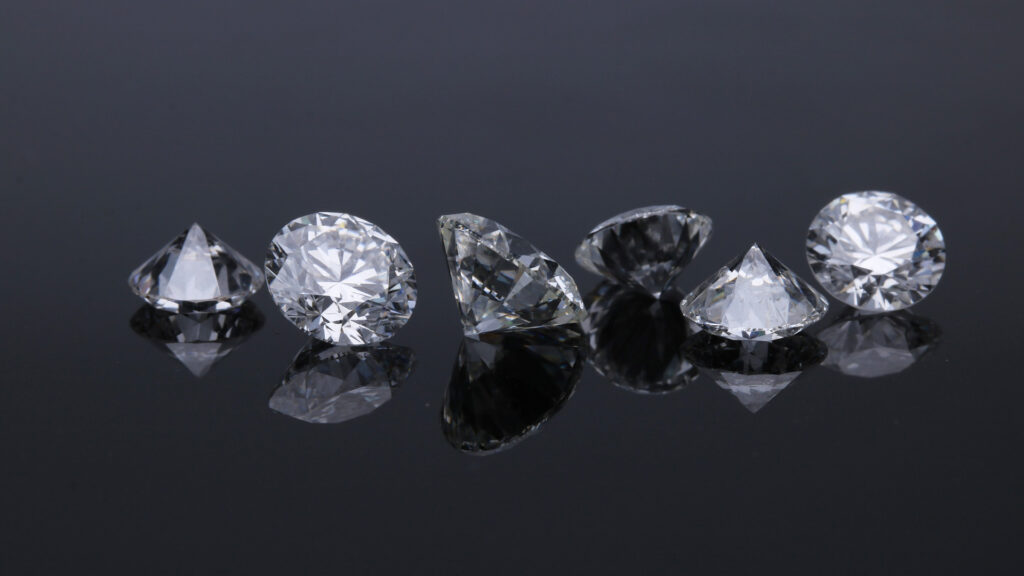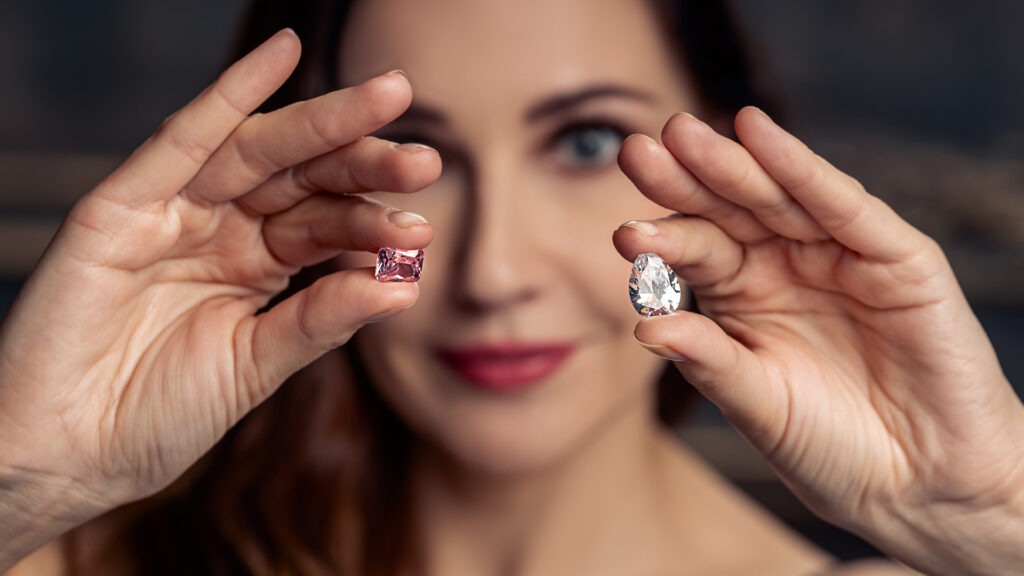Recent years have seen an increase in demand for moissanite engagement rings. They are much more accessible to many couples due to their wide variety of sizes and shapes. Compared to a diamond, moissanite gemstones frequently have greater clarity and sparkle. Both provide a similar kind of enduring hardness in terms of durability, making them almost identical. It is clear why moissanite has become so popular given all this and the fact that it is a reasonable alternative. But can a knowledgeable customer tell the difference between a lab-created moissanite stone and a genuine diamond?
The primary difference that could exist is colour. Stones made of moissanite can have a variety of colours, the majority of which are colourless. Because many synthetic diamonds have a slight hint of warmth and are nearly colourless, nearly colourless moissanite stones will resemble natural diamonds more. As moissanite manufacturing technology has advanced over time, many people now favour it over diamonds for its fire and brilliance.
The production of Moissanite stones is also, by design, flawless. Natural diamonds inherently contain tiny flaws. There are diamonds without imperfections, but they can cost thousands more. Moissanite stones produce the same flawlessness without the extra expense.
A machine that measures electrical conductivity is one of the specialized tools you’ll need to tell the difference in addition to colour and flaws. Given that the majority of us do not have one of those lying around, it is safe to say that most eyes cannot distinguish between the two.



